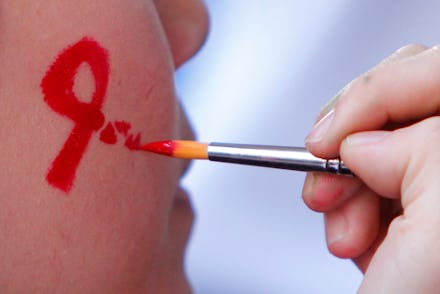Here Are the Facts and Myths About How HIV Is Transmitted

Over 36.9 million people worldwide are living with human immunodeficiency virus, better known as HIV, according to a 2015 report by the Joint United Nations Programme on HIV/AIDS. Although many social and medical advances have been made, and their have been countless efforts made to promote worldwide awareness of the disease, it still carries a hefty public stigma and many misunderstandings about how exactly it's transmitted.
A clearer understanding of its transmission will help break down the stigma and stereotype of the virus.
For one, HIV cannot live for very long outside of the body, nor can it be reproduced outside of it, according to the U.S. Centers for Disease Control and Prevention. The only way to spread HIV is through certain body fluids from an HIV-positive person, such as blood, semen, pre-seminal fluids, rectal fluids, vaginal fluids or breast milk, according to AIDS.gov. Then, the body fluid needs to come into contact with mucous membranes (which are found in the rectum, vagina, penis and mouth) or damaged tissue, or enter directly into the bloodstream.
Also, exposure does not guarantee transmission. The highest risk for transmitting HIV is via a blood transfusion with contaminated blood.
Read more: These Cities Are Taking Action to Take Down HIV and AIDS
Most commonly, transmission occurs either from unprotected sexual interactions or shared needles or syringes. The virus can survive inside a used needle for up to 42 days.
Theoretically, transmitting HIV through oral sex is possible, but it's very rare, and would only occur if an HIV-positive partner ejaculates in the partner's mouth, according to AIDS.gov.
Unless there is blood, like from broken skin or gums, when you bite or open-mouth kiss an HIV-positive person, then there is no risk of transmission. Though there have been a few cases of transmission occurring from these situations, it is quite rare — and again, it is only possible if blood is involved.
HIV is not spread through air, water or mosquitoes, according to AIDS.gov. Nor can HIV be transmitted through saliva, tears or sweat if there is no blood present. Shaking hands, sharing glasses, closed-mouth kissing and using a toilet will not spread HIV.
If an HIV-positive person handled and prepared your food, and a little bit of their blood got into it, there would still be no risk of transmission, as the virus could not survive the exposure to air, heat from cooking or exposure to stomach acid and would thus be destroyed, according to the CDC. However, in rare cases with infants, HIV can be spread with pre-chewed food from an HIV-positive person if their blood has mixed with the food.
It's important to get tested for HIV, as one in every six HIV-positive people are unaware of it, according to Planned Parenthood.